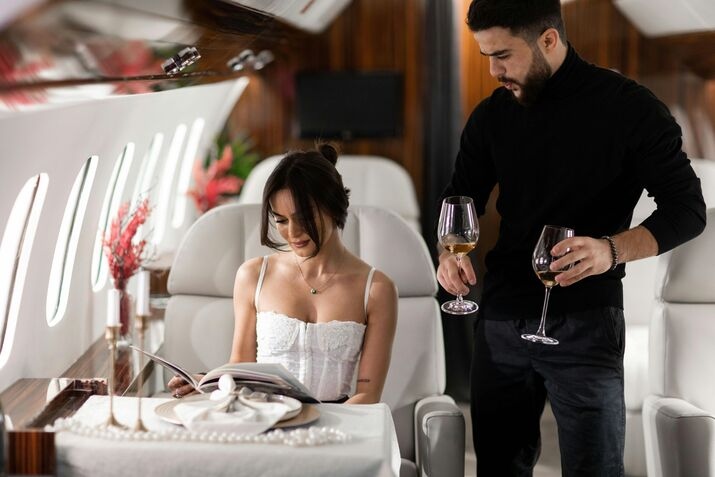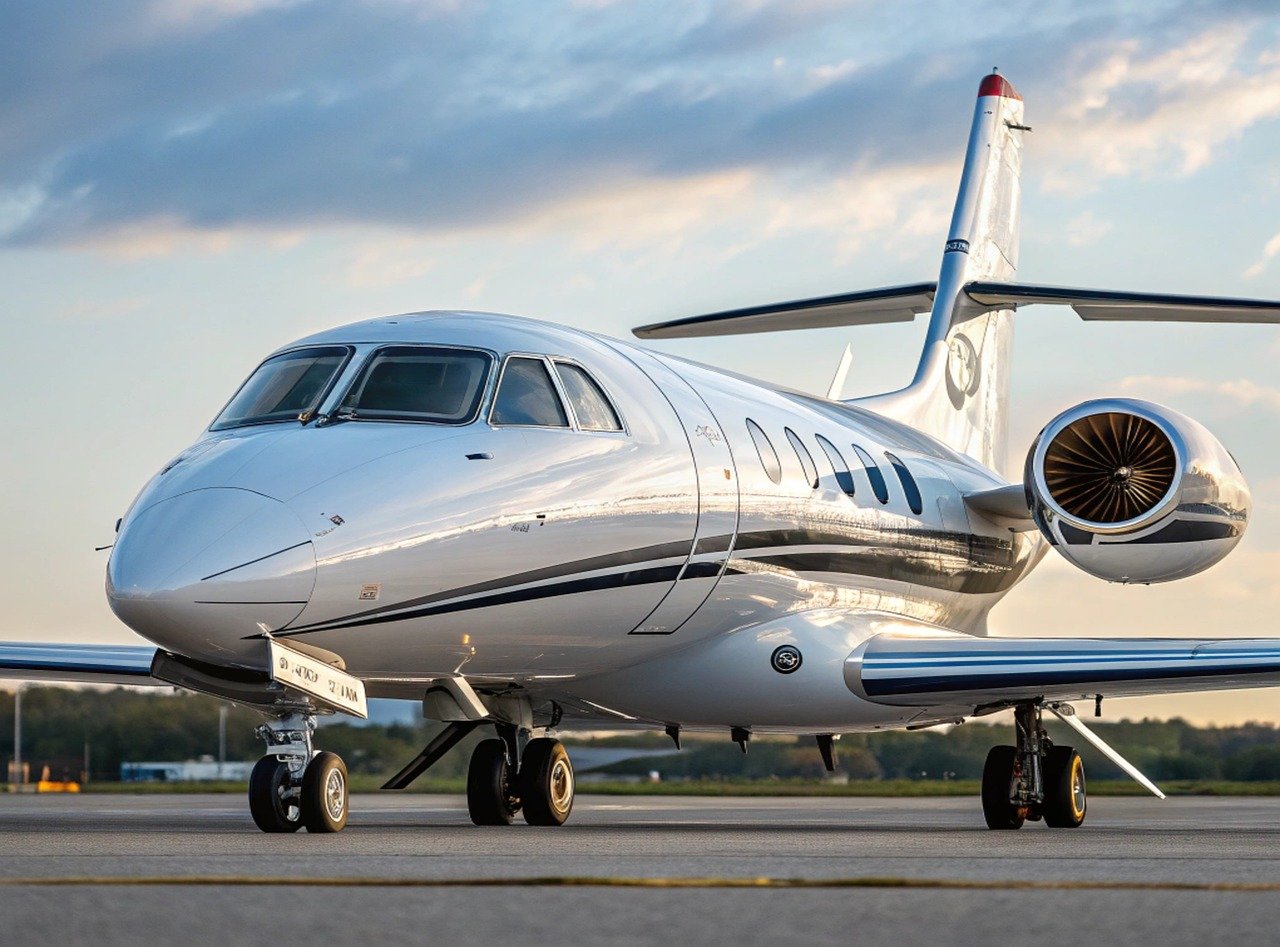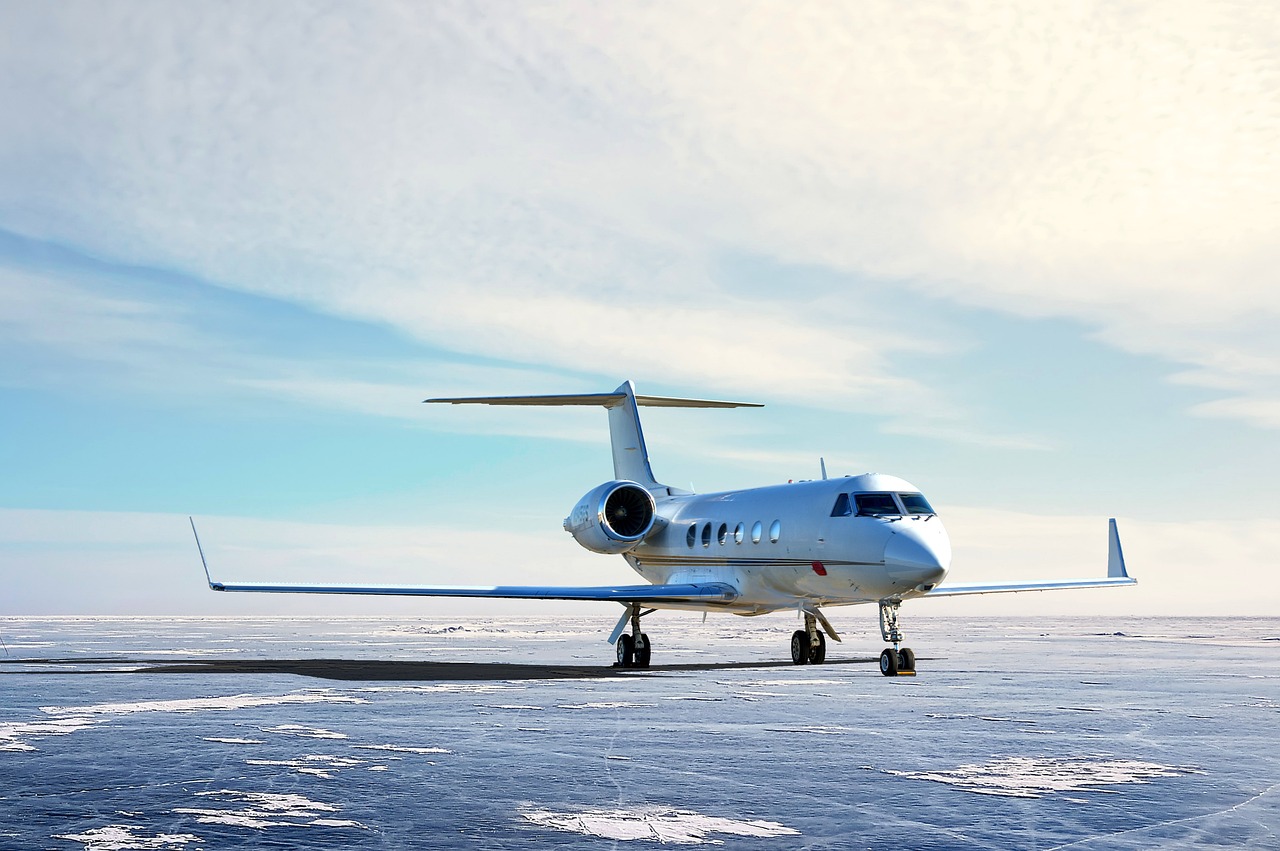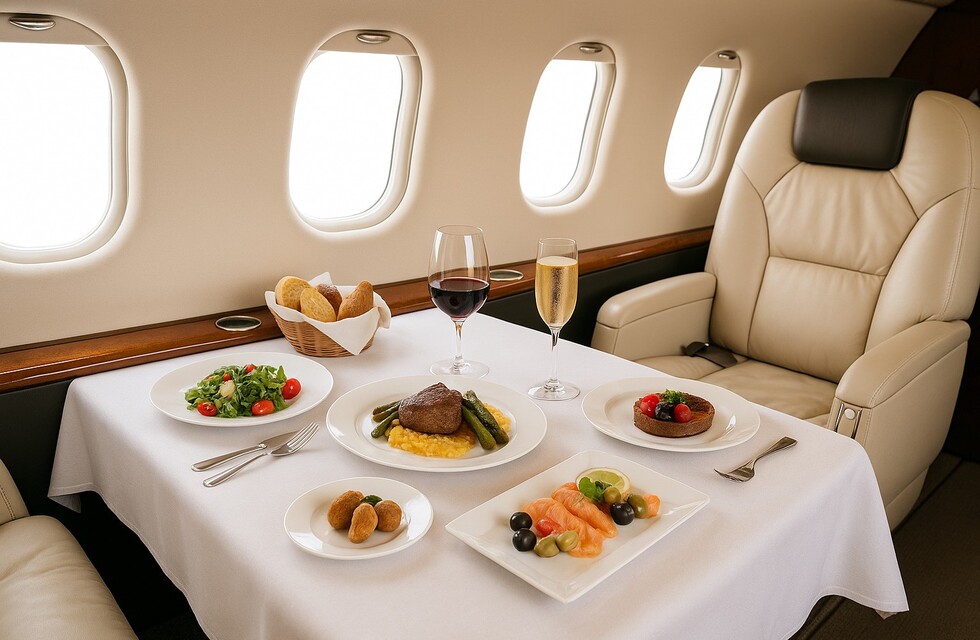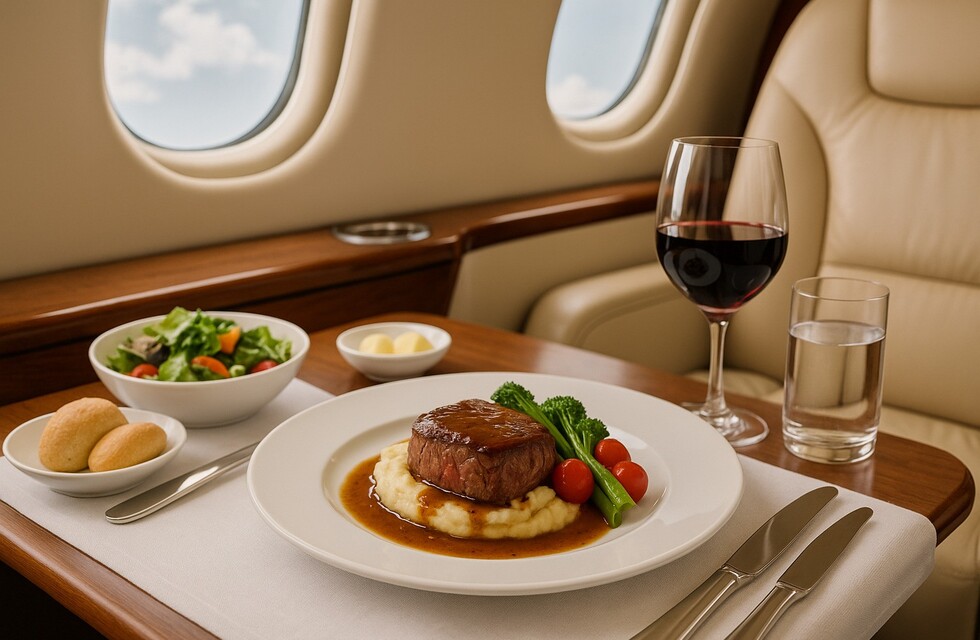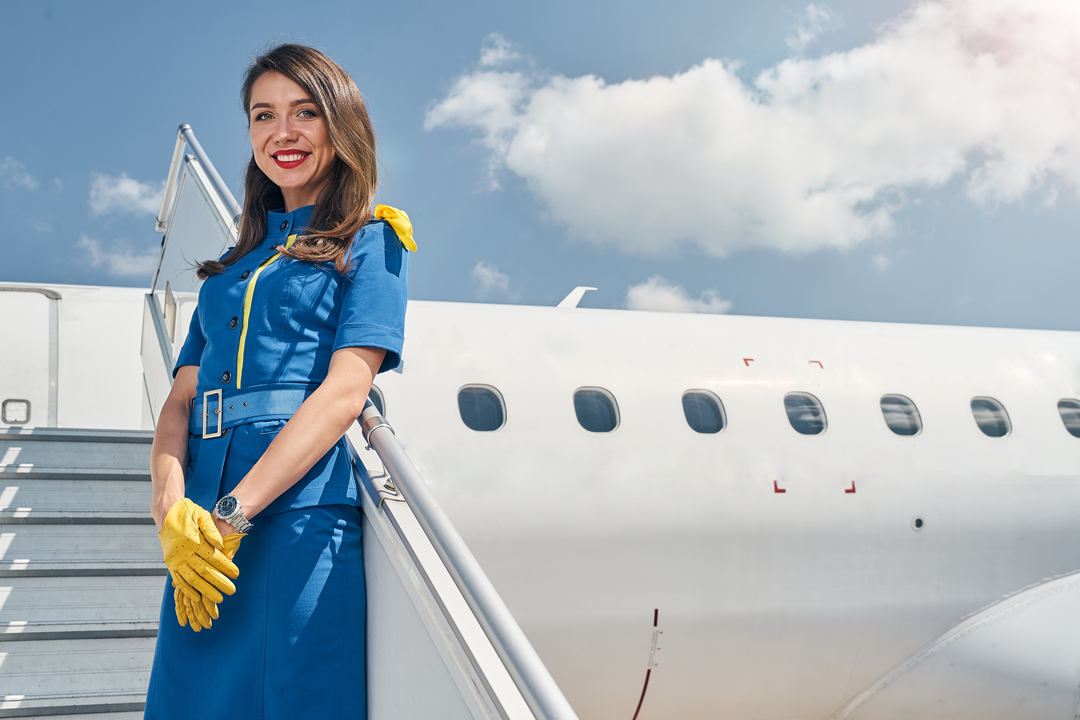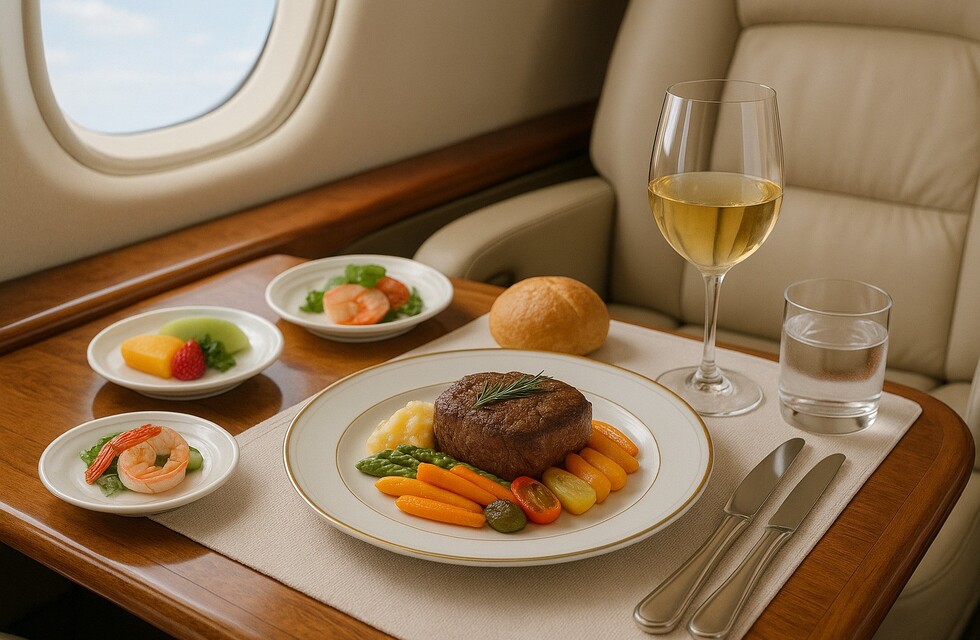When we think of the luxury of private jet travel, we often picture spacious seats, personalized service, and a sense of exclusivity that defines the experience. Yet one of the most underappreciated elements of this lavish journey is the in-flight dining—specifically, the art of pairing wines with gourmet meals. On private jets, where attention to detail reigns supreme, every element of the journey is curated, including the wine list. But crafting the perfect wine pairing for a meal while cruising at 35,000 feet isn’t just about choosing a bottle that tastes good. It’s about understanding how altitude, meal composition, and the discerning tastes of passengers influence the overall experience.
In this guide, we’ll explore the art of pairing wines with in-flight meals on private jets, providing insights into how sommeliers curate the perfect wine list, the challenges that come with the unique flying environment, and some tips for ensuring every sip enhances the culinary experience.
The Basics of Wine Pairing
Before delving into the intricacies of in-flight wine pairing, let’s review the foundational principles of wine and food pairing. At its core, wine pairing is about balancing complementary flavors and textures between the wine and the airplane food. A few common strategies include:
Matching the weight of the wine to the dish: Lighter wines tend to pair well with lighter dishes, and richer wines complement more robust flavors.
Balancing acidity: Wines with higher acidity, like Sauvignon Blanc, can cut through rich, fatty foods like foie gras or creamy sauces, while fuller-bodied wines like Cabernet Sauvignon pair well with grilled meats.
Considering the preparation method: Grilled, roasted, or smoked foods have different flavor profiles and textures that influence the wine choice. A grilled steak, for instance, might be best accompanied by a bold red wine, while seafood in a light broth calls for a crisp white.
Wine Pairing at 35,000 Feet: The Challenges
When it comes to pairing wines with in-flight meals, especially in the exclusive world of private jets, the approach changes due to several unique challenges that flying introduces. The combination of altitude, cabin pressure, and the controlled in-flight environment can all influence how we perceive flavors, making wine selection more of an art than a science.
1. Altitude and Taste Sensitivity
At 35,000 feet, the cabin pressure and lower humidity can significantly dull our taste buds. A study by Cornell University found that the combination of altitude and dry air can reduce our sensitivity to salty and sweet flavors. This means that in-flight meals, as well as the wines served, often need to be bolder and more flavorful than what one would choose for an identical meal on the ground.
To overcome this challenge, sommeliers typically opt for wines with higher acidity, more pronounced aromas, and stronger flavors. Wines with these characteristics tend to retain their vibrant profiles at altitude, ensuring that passengers can still fully experience the wine’s nuances. For instance, a delicate, lightly oaked Chardonnay might not stand out as much at 35,000 feet, while a bold red like a Napa Valley Cabernet Sauvignon could hold its ground, offering a fuller expression of fruit and tannin.
2. Wine Temperature
The ideal serving temperature for wine also plays a role in creating a memorable in-flight wine experience. In the cooler temperatures of the cabin, wine can be served slightly warmer than it would be in a standard restaurant environment, especially reds. This adjustment is crucial for whites, which can lose their freshness when served too cold. On the other hand, reds served too warm might feel overwhelming, especially at higher altitudes.
Private jets often come equipped with specialized wine storage units that regulate temperature, allowing for wines to be served at their optimal temperature. However, if the wine is not properly chilled or warmed before service, the result can be a less-than-ideal experience. A great sommelier will ensure that each wine is stored and served in accordance with its ideal drinking conditions, ensuring that the flavors shine, even at 30,000 feet.
3. Space and Storage Limitations
Private jets, even those with high-end amenities, have limited storage space. This constraint means that a sommelier cannot always carry the same variety of wines that a top-tier restaurant would have. This makes thoughtful wine selection essential. A well-curated wine list for a private jet flight must strike a balance between variety, compatibility with the planned meal, and the limited storage options available.
In practice, this often means that a sommelier selects wines that can be paired with a variety of dishes, ranging from seafood to meats to vegetarian options. The wines chosen will likely be versatile, able to complement multiple courses, and ensure that the meal is elevated throughout the entire experience.
Crafting the Perfect Wine Pairing
When designing a wine pairing for a private jet experience, a sommelier considers several factors, such as the cuisine being served, the preferences of the passengers, and the atmosphere of the flight. Here’s a step-by-step breakdown of the process involved in creating the perfect in-flight wine pairings.
1. Consider the Meal’s Composition
A wine’s ability to complement the flavors and textures of a meal is paramount to creating a harmonious pairing. On private jets, the meals are often carefully planned to cater to the tastes of passengers, from light seafood dishes to rich, hearty meats.
Seafood: A crisp white wine, such as a Sauvignon Blanc or a light Chardonnay, pairs well with seafood dishes like lobster or shellfish. The acidity in these wines cuts through the natural sweetness of the seafood, enhancing its delicate flavors.
Grilled Meats: Rich, full-bodied red wines, such as Cabernet Sauvignon or Syrah, are ideal for meats like steak, lamb, or venison. These wines’ tannins and bold fruit profiles complement the savory, charred flavors of grilled dishes.
Pasta and Risotto: For pasta dishes or creamy risottos, a medium-bodied wine such as a Pinot Noir or a Vermentino works wonderfully. These wines have enough acidity to balance the richness of creamy sauces, while their fruitiness adds an extra layer of depth.
Cheese and Charcuterie: When serving a variety of cheeses and charcuterie, consider wines with balanced acidity and some residual sugar, such as a Riesling or a light red like Pinot Noir. These wines enhance the flavors of the cheeses without overpowering them.
2. Tailor to Passengers’ Preferences
A significant advantage of flying on a private jet is the personalized service. A sommelier will often customize the wine selection based on the preferences of the passengers. Whether they prefer bold reds or light whites, the wine list can be fine-tuned to ensure their tastes are met.
Additionally, many passengers aboard private jets are well-traveled and have sophisticated palates. As such, the wine offerings can include rare vintages or limited-edition bottles that would be difficult to find in a typical restaurant or retail store. This attention to detail creates a memorable experience and elevates the entire journey.
3. Experiment with Local or Unique Wines
One of the fun aspects of private jet travel is the ability to indulge in unique experiences, such as tasting wines from regions that may not be easily accessible. For instance, serving a rare wine from a boutique vineyard in Italy, or a limited-edition bottle from a famous Bordeaux estate, can add an element of discovery to the in-flight experience.
Local wines that reflect the region the jet is flying over can also create a sense of place. For example, if flying over Tuscany, a sommelier might opt to serve a local Chianti Classico, adding an authentic touch to the meal.
Tips for Enjoying Wine on a Private Jet
Serve wine at the right temperature: Adjust wines according to their ideal serving conditions, especially when flying at altitude.
Select wines with expressive flavors: Bold and aromatic wines stand up better to the unique conditions of in-flight dining.
Choose versatile wines: Since private jet menus can vary, selecting wines that pair well with a range of dishes ensures a smooth and enjoyable experience for everyone.
Savor the moment: Wine is more than just a beverage—it’s a sensory experience that enhances the journey. Take time to enjoy it slowly, appreciating both the flavors of the wine and the luxury of the flight.
Conclusion
Wine pairing on a private jet is both an art and a science. By considering altitude, the composition of the meal, and the unique preferences of passengers, sommeliers craft a wine experience that enhances the culinary journey from takeoff to landing. Whether it’s a crisp Sauvignon Blanc to complement seafood or a bold Cabernet Sauvignon to enhance a grilled steak, the right wine elevates the meal and transforms an in-flight dining experience into a true luxury. For those traveling in the lap of luxury, the art of pairing wines with in-flight meals ensures that every sip is as exceptional as the journey itself.

